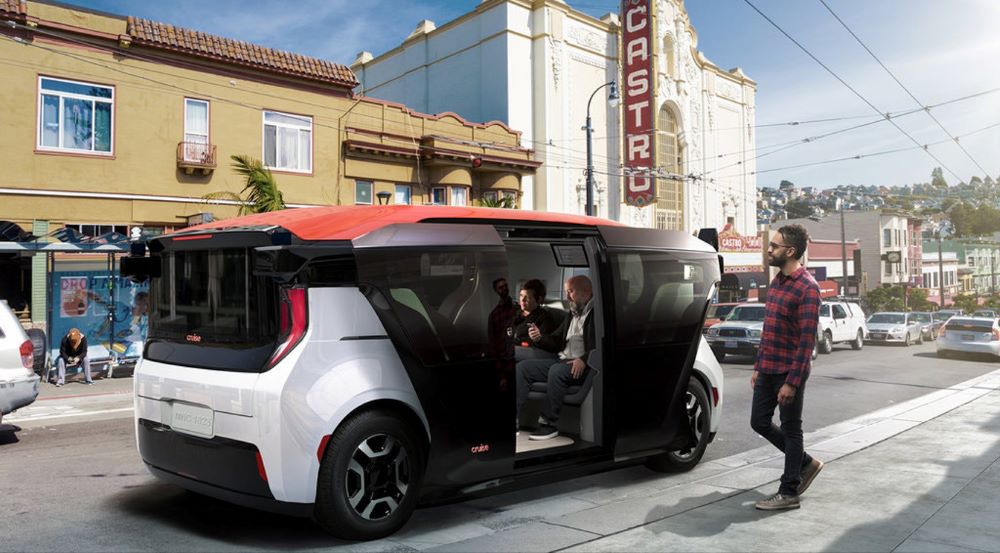San Francisco is the city where Cruise has deployed the most vehicles. Here it tested its commercial service of paid robotaxi rides in practice.
The self-driving vehicles from Cruise, a subsidiary of General Motors, “are not safe for public use,” the California Department of Motor Vehicles (DMV) said. According to digital Passenger Transport Magazine the DMV has suspended Cruise's robotaxi license “effective immediately” and indefinitely. The company has recently been involved in several safety incidents, most recently a collision by another driver that left a pedestrian trapped under one of Cruise's self-driving vehicles.
Among the reasons cited for the suspension: Cruise's vehicles "are not safe for public use." The company is said to have “misrepresented” the safety of its vehicles. Cruise's vehicles could pose "an unreasonable risk to the public." Permits may be revoked “if a manufacturer engages in a practice in such a way that immediate suspension is required for the safety of persons on public roads.”
suspended permits
“The DMV has explained to Cruise the steps required to apply to reinstate the suspended permits. The DMV added that it will not approve this until the company has met the requirements to the department's satisfaction,” the agency said. Cruise can still test its vehicles with human safety officers behind the wheel. But the robotaxi permit that allowed picking up and dropping off passengers in driverless vehicles has been suspended.

San Francisco is the city where Cruise has deployed the most vehicles. Here it tested its commercial service of paid robotaxi rides in practice. A suspension could have serious consequences for the company's ability to scale into new markets. The suspension could also draw a clearer distinction between Cruise and its main rival, Alphabet's Waymo, which also operates a paid robotaxi service in San Francisco. “This is impactful not only because of what it says about California's relationship with Cruise, but also because of what that same act says about California's relationship with Waymo,” a security expert said in an email. “This is a line item veto, not a general AV policy. Without access to their internal data, we might not be able to compare the technical benefits of Cruise and Waymo and the differences between the two. But California has now made the distinction for us.”
In an email, Cruise spokesperson Hannah Lindow confirmed that the company received notice of the suspension earlier yesterday. “We learned at 10.30:XNUMX a.m. today that the California DMV has suspended our driverless permits,” Lindow said in a statement. “As a result, we will be ceasing operations of our self-driving AVs in San Francisco. Ultimately, we are developing and deploying autonomous vehicles in an effort to save lives.”
collision
In August, a Cruise robotaxi collided with a fire truck, injuring one passenger. In response, the company halved the number of vehicles it initially deployed (estimated to be around 100) while the city investigated the incident. And on October 2, a pedestrian was struck by a Cruise robotaxi in a collision in San Francisco. According to police, the Cruise vehicle then slowed down, with the rear wheel still on the woman's leg. After Cruise disabled the vehicle, rescuers were able to get the vehicle off the woman's leg.
Following the incident, National Highway Traffic Safety opened a safety investigation to determine whether Cruise's self-driving vehicles pose a risk to pedestrians. The company's AVs could pose a risk to pedestrians at crosswalks, the organization's report said. LCruise's indow confirmed that the suspension was related to the October 2 incident. “The AV braked aggressively before impact and, sensing an impact, attempted to stop to avoid further safety issues,” she said.
After the incident, Cruise contacted several government agencies, including the California DMV, the California Public Utilities Commission which regulates commercial ride-hailing, and NHTSA. The company has shared video of the incident from his vehicle with investigators and is answering their questions, Lindow said. She added: “Our teams are currently conducting an analysis to identify possible improvements in the robotaxi's response to these types of extremely rare events.” San Francisco officials, as well as ambulance, police and fire officials, have expressed serious concerns about the driverless vehicles. Previously, the robotaxis have been involved in a number of smaller collisions.



